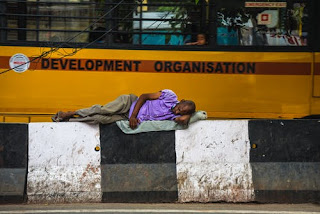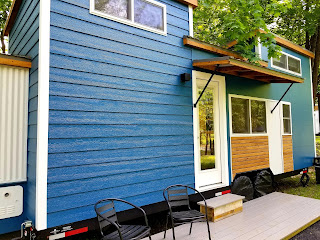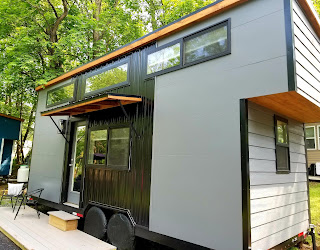Is tiny the answer?
With the bitter cold we’ve been experiencing in the North East, one can’t help but think about the homeless population and how they are making it through this frigid weather. The National Law Center for Homeless and Poverty reports that nearly 3.5 million people experience homelessness each year. Some seem to think the use of tiny homes is the answer to getting people off the streets. It very well could be and off the top of your head, it sounds like a great idea, however, the use of tiny homes as homeless shelters have faced many challenges, and unfortunately, in some cases probably fewer successes than anticipated.
There is no doubt that providing housing to the homeless is something we would all like to see happen. However, there are costs associated with this idea, that most don’t realize. From several tiny home communities across the country, we have seen housing costs anywhere from $10,000 to upwards of $88,000 per home for each person. This number might shock you, but keep in mind, that just providing housing is only logistics. The purpose of some of these tiny house communities who serve the homeless are to provide transitional housing, where the occupant can not only have the warmth of heat and cool air conditioning, the convenience of hot water, but also a multi-level support system to help each person to get on their feet and get a new start in life.
It sounds like a great plan, right? It very well could be, let’s take a deeper look at what’s happening across the country. California has several homeless tiny communities scattered across the state, however, LA County has almost 30,000 people who sleep on the streets every night. They are desperate for a solution.
 |
| photo from Elvis Summers Facebook page |
Recently, a private citizen, Elvis Summers began his personal journey to help the homeless by building small tiny house structures to simply shelter homeless individuals. Since 2015, he has built over 40 structures and has them scattered them around LA under bridges and in areas where the people can get out of the gutters. Recently, Elvis ran a GoFundMe and raised over $100,00 to help with the cost of building his brightly colored homes. These structures are providing protection against the elements, however, do not have any utilities, which has come into question. In the past, the police seized some of the tiny homes, siting them as health risks, after an order to remove all the homeless off the sidewalks and remove personal bulky items from storefronts and businesses. The police stated that the housing in some cases was being used for drug houses, prostitution and even seized some guns from one of the homes. After much backlash, the city decided to return the homes to the streets and agreed to look for an unused city parcel to place all the homes but have strong feelings against an organized community.
 |
| photo from Elvis Summers Facebook page |
Elvis continues to build the tiny structures. We reached out to Elvis informally for an update on the possibility of obtaining land, and we didn’t hear back yet. We wish him the best and hope he continues his good works.
In Seattle, they are struggling to keep their tiny house communities open. With at least 400 homeless encampments throughout the city, they too struggle with solutions on how to shelter them. With the recent close of the Licton Springs location (one of many), it draws some serious questions about how the communities and their transitional programs are being run. They have had issues in the past with the companies they have contracted to provide services to those staying in the houses but seem to be continuing the search for a system that works as they are trying to use the homes as transitional living. They, unfortunately, are experiencing more failures than successful transitions, even with some specialized services being offered.
This brings to mind several questions. For someone who has lived on the streets most of their lives, can they transition back into a more mainstream environment? How much do communities that just provide a roof of their heads, really do to help get a homeless person into a self-sustaining situation?
One successful community, we must point out is the Veteran’s Community Project. In Kansas City, the project is currently housing individual homeless veterans in the program with 240sq ft of living space in their own tiny home. Not to own, but to use while they are in the program. Each person has a goal program created and tailored toward their needs to help each one of them be successful in transitioning into permanent housing. They offer a variety of supportive services from many agencies such as; counseling, advocacy and case management, mentoring services, independent living skills, financial counseling and all types of classes from cooking to gardening.
The community currently has about 25 homes and is gearing up to have 50 by the time it is completed. Relying solely on donations, grants, and profits from selling merchandise, the Veteran’s Community Project is on track to open several more locations throughout the country. You can help support the program by donating, purchasing a personally engraved brick, sponsoring a house or a veteran or even volunteer.
The Veteran’s Community Project is getting it done and changing lives. We only touched on three communities after researching many, but there are quite a few tiny home communities across the country, some ran by cities/counties, some by churches and ministries and some by non-profits all trying to help the homeless off the streets. I just can’t help but think that If we could model more communities after the Veteran’s Community Project, we could make a huge difference in the lives of the homeless with tiny housing. The efforts to try to get people off the streets by anyone are humbling and noble, however, we need to look at the problem as a whole, and not just provide shelter.
If you want to help the homeless but can’t make a monetary donation, you can volunteer your time at a soup kitchen, you can volunteer your skills at a shelter, or by donating non-perishable foods, personal hygiene items, donate your gently used clothes, warm coats, blankets, and warm socks. Socks are always being requested. Christmas promotions for giving are over, it’s a new year, and a great time to think about cleaning out while we are all captive to the indoors with the recent threat of the polar vortex. Not only can you donate goods to the homeless shelter, but let’s not forget that most local hospitals run low on blood supply and have a great need this time of year. You could save a life by donating a pint of blood over the cold winter months. Don’t forget our furry friends in animal shelters, they are often cold too, and shelters are always in need of old blankets and towels. We can all do something, even if it’s something small, we can all make a difference.






Comments
Post a Comment